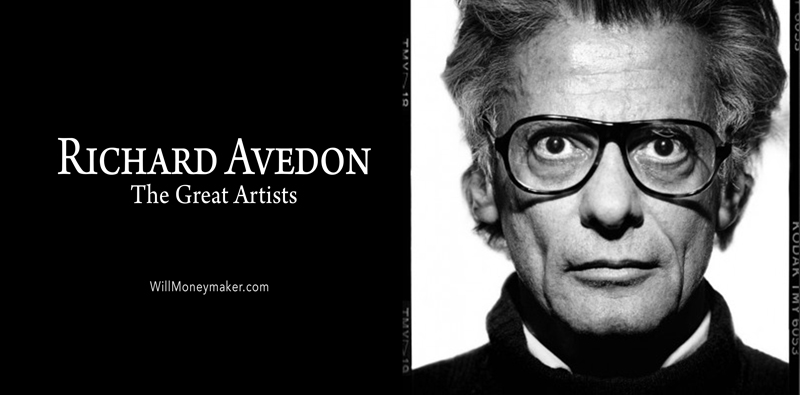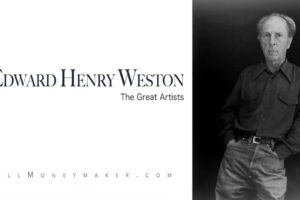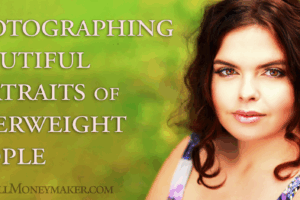The Human Side of Portraiture
One of Richard Avedon’s most famous quotes goes like this:
“A portrait is not a likeness. The moment an emotion or fact is transformed into a photograph it is no longer a fact but an opinion.”
That, I think, is a telling statement. An idea that we all can learn from. Photography, by its very nature, is a medium that records the fact. Every time you press that shutter release, the camera unobjectively records what is in front of it. The camera is not capable of recording anything other than fact. It’s the artist who is making the photograph that is making the work into something more, something that is interpretive. Once the photograph is made, each viewer is free to form his or her own opinions.
Avedon’s life and work are full of insights like this. Let’s delve a bit deeper into the life of Richard Avedon and the work that he is most noted for to see what we can learn from this historic photographer.
Richard Avedon: A Brief Biography
Richard Avedon was born on May 15, 1923, in New York, New York. He lived and photographed until his death at 81 years of age on October 1, 2004, in San Antonio, Texas. In that time, Avedon made a name for himself not only in the fashion world but also in the world of fine art photography, too.
Avedon got his start in the fashion world with his parents, Russian-Jewish immigrants Jacob and Anna Avedon. Jacob Avedon ran an upscale fashion boutique on New York’s Fifth Avenue and it was here that Avedon got his interest in fashion photography. As a child, he witnessed many meetings between his father and various fashion icons from Vogue, Harper’s Bazaar and Vanity Fair.
As with his interest in fashion, Avedon’s interest in photography started when he was a child. He had a Kodak Box Brownie camera and he could often be found photographing his sister, Louise. By the time he was 12, with encouragement from his mother Anna, he joined the Young Men’s Hebrew Association Camera Club and in high school, he took a position editing his school’s art magazine along with James Baldwin, who would go on to become a great American novelist.
After high school, Avedon spent a year in college before dropping out in favor of a position in the United States Merchant Marines. This was during World War II and he spent two years as a photographer for this service, his primary job to make portraits for sailor’s identification cards. The Merchant Marines also published a magazine, The Helm, and Avedon’s work was published in this magazine during this time.
At the end of World War II, Avedon came home and spoke with Alexey Brodovich, who was the art director for Harper’s Bazaar. From there, Avedon went on to study under Brodovich at the New School of Social Research’s Design Laboratory. Avedon and Brodovich became fast friends, with Brodovich heavily influencing Avedon’s work. Avedon himself went on to work as a freelance photographer, primarily for Harper’s Bazaar, though over the span of his long and storied career, he worked for many, many magazines, publications, agencies, and corporations.
Interestingly, Avedon’s rise came as the 35mm camera was born and as Cartier-Bresson and others were giving rise to a new genre of photography: street photography. Avedon did not believe himself to be a street photographer, though he did dabble in the genre at a time, nevertheless, he did appreciate the concept and he incorporated many of the principles and influences of street photography into his own work. By 1945, Avedon was working as a freelance photographer, a career that would result in dozens, hundreds of famous images taken throughout his life as he photographed everyone from everyday people to models, celebrities and dignitaries.
What We Can Learn From Avedon’s Work
One of the major things that set Avedon’s work apart from fashion photographers of the day was that Avedon photographed the human, not the fashion. That is to say, while Avedon’s work displayed the fashions of the time in a good way, the imagery wasn’t all about what the models were wearing. Gone were the rigid poses and the formality that forced viewers to look at the dress and not much else. Avedon breathed life into fashion photography, capturing the personality of his subjects, giving them dynamic poses, making the photographs seem alive and not simply a display of couture.
For this reason, his photography proved quite popular. It wasn’t the rigid advertising work that people had become accustomed to but rather something spirited that people could relate to, something that showed clothing and accessories in a natural, desirable, accessible way. Avedon didn’t hesitate to include his subjects’ flaws within the images. In this way, with complete honesty in his images, Avedon was able to bring both the viewer and the subject closer together.
Another thing that we can learn from Avedon (and if you really study his work, there are likely dozens of lessons to be learned!) is the way he built a rapport with his subjects. You see, the personality, the life in his images, it didn’t come from any special techniques or a top-of-the-line camera. It came from the way he was able to communicate with models and portrait sitters, making them feel comfortable, at home in front of his lens.
In fact, many of Avedon’s contemporaries learned from this, using Avedon as an example, his methods a lesson that helped other photographers build that essential trust between the photographer and model. If you do portraiture of any kind — family photos, wedding photography, corporate headshots, and so on — then this lesson is key. Trust, a friendly rapport with your subjects, is necessary to make your subjects comfortable in front of your camera, thus allowing you to photograph their true personalities.
If you ever have the opportunity, I highly recommend that you dig deeper into Richard Avedon’s work and the lessons that can be learned from his photography. Even if you don’t specialize in portraiture, the intimacy that is so often displayed in his work shows how essential it is that we really take the time to get to know our subjects, human or otherwise. And that is just one lesson of many that can be taken away from the life of Richard Avedon.





